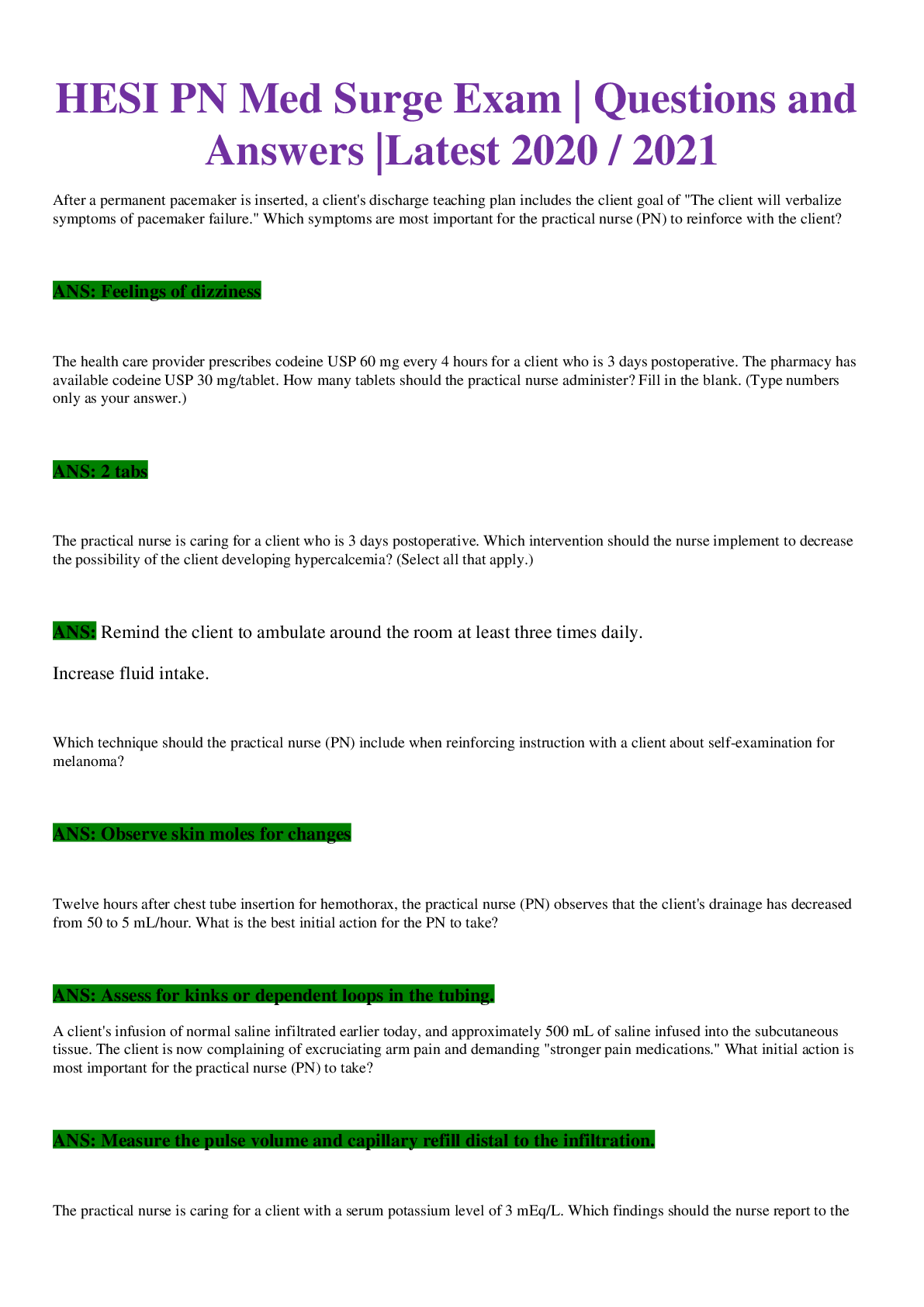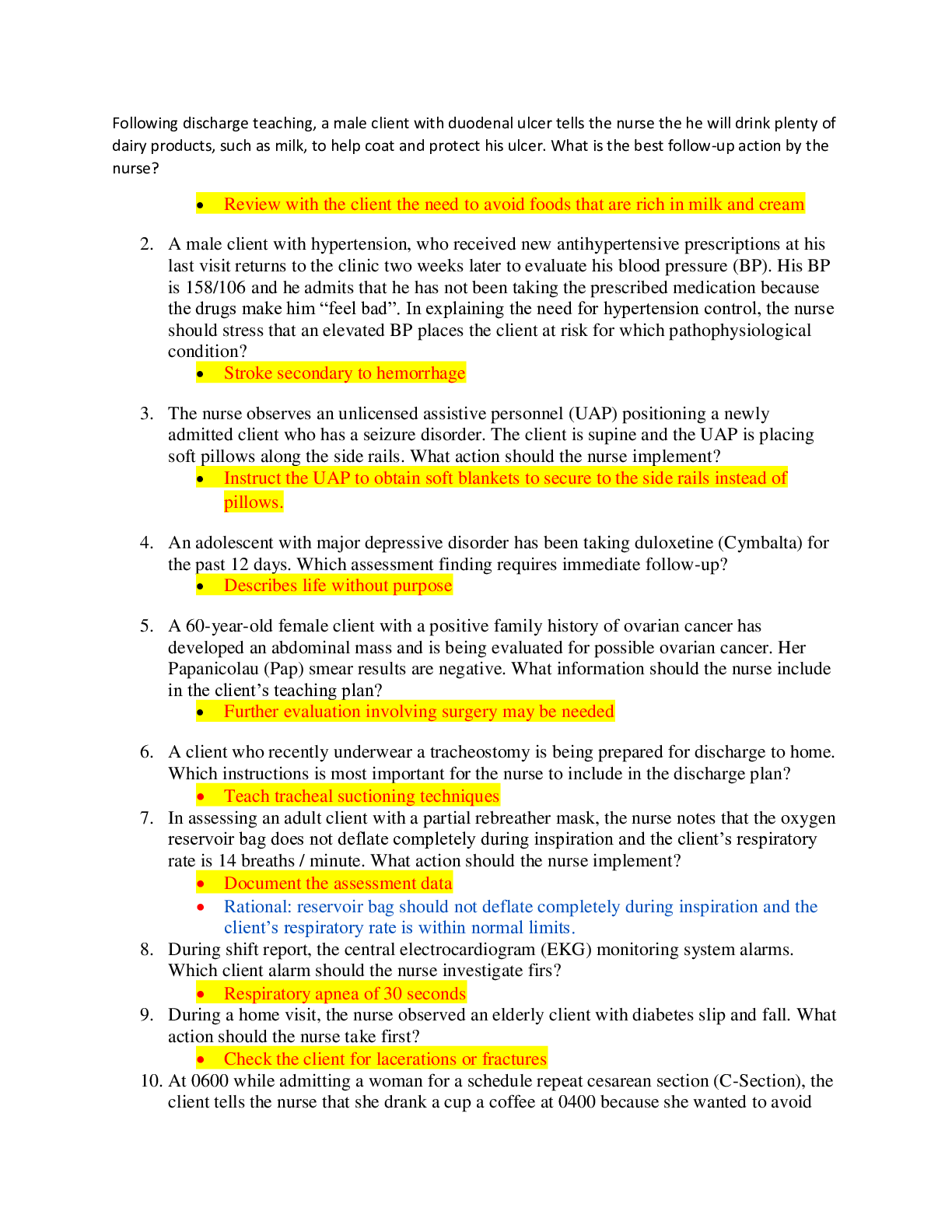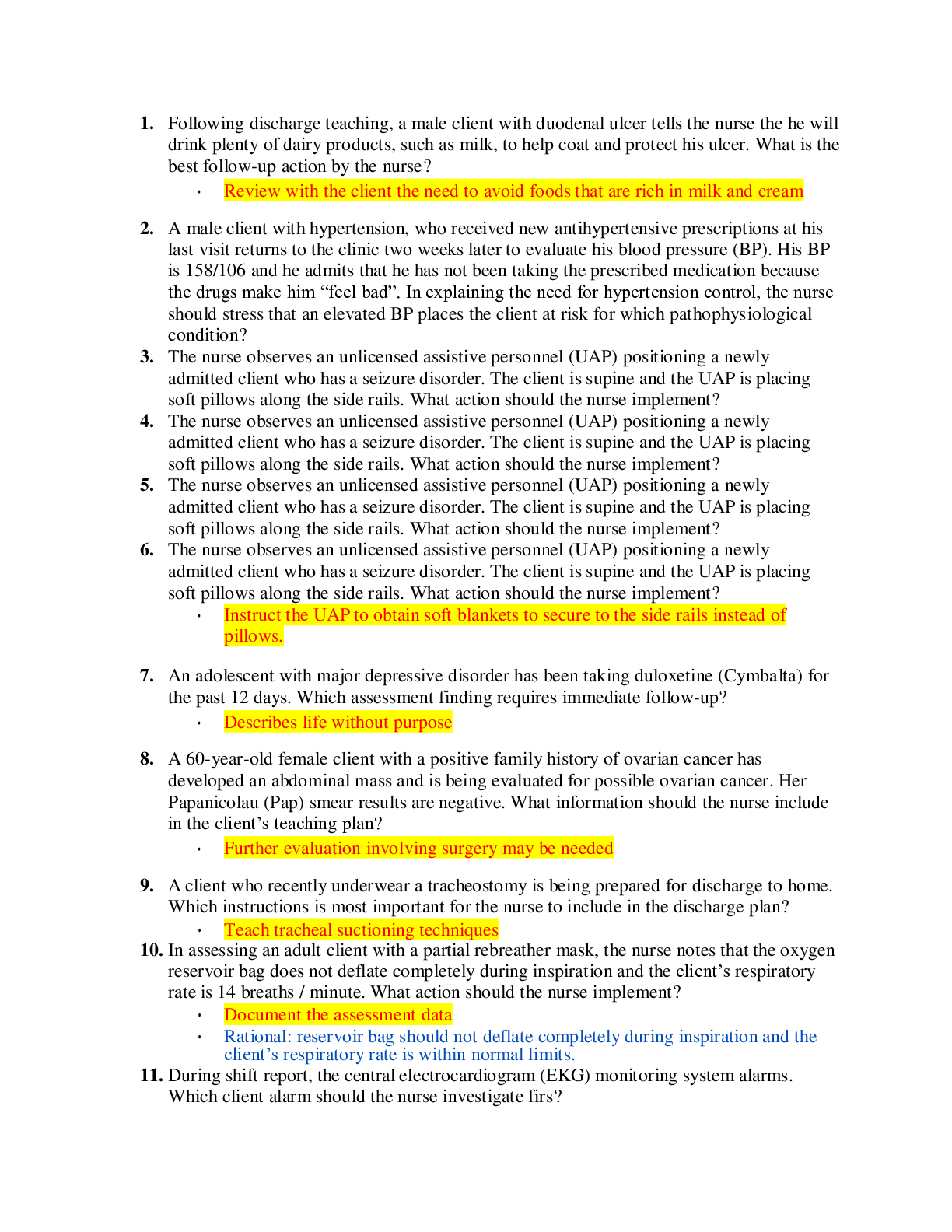MED SURG > HESI MED SURG > Med Surg Hesi |Real Exam| Questions with Complete Solution and Rationale Graded A+ 2023/2024 (All)
Med Surg Hesi |Real Exam| Questions with Complete Solution and Rationale Graded A+ 2023/2024
Document Content and Description Below
Med Surg Hesi |Real Exam| Questions with Complete Solution and Rationale Graded A+ 2023/2024 Multiple Choice 1 of 60 The nurse is concerned about a patient's stroke volume. What determining facto ... rs should the nurse consider when determining stroke volume? 1 Preload, afterload, and contractility 2 Cardiac output, heart rate, and body surface area 3 Afterload, cardiac output, and mean arterial pressure 4 Cardiac index, mean arterial pressure, and blood pressure {{Correct Ans- 1 Preload, afterload, and contractility determine stroke volume (SV). Cardiac output and heart rate are used to determine stroke volume; however, body surface area is used to determine cardiac index. Mean arterial pressure is used to determine afterload, not stroke volume. Cardiac index is a more precise measurement of the efficiency of the heart's pumping action; it is not used to determine stroke volume. 2 of 60 The nurse is caring for a patient receiving intraaortic balloon pump (IABP) therapy. On which part of the electrocardiogram should the nurse expect the balloon to be inflated? 1 P wave 2 Q wave 3 R wave 4 T wave {{Correct Ans- 4 The electrocardiogram (ECG) is the trigger for the pump to start inflation on the T wave. Deflation occurs on the upstroke of the R wave (of the QRS) complex. The P and Q waves are not triggers for the pump to either inflate or deflate. 3 of 60 The nurse is attempting to determine a patient's left ventricular afterload. Which hemodynamic value should the nurse use? 1 Central venous pressure 2 Pulmonary arterial pressure 3 Systemic vascular resistance 4 Peripheral vascular resistance {{Correct Ans- 3 Systemic vascular resistance is an index of left ventricular afterload. Central venous pressure is an index of preload. Pulmonary arterial pressure and peripheral vascular resistance are indices of right ventricular afterload. 4 of 60 A patient with severe left ventricular failure is considering artificial heart transplantation. What should the nurse inform the patient is a long-term treatment associated with this device? 1 Beta-blockers 2 Anticoagulation 3 Antibiotic therapy 4 Immunosuppressive agents {{Correct Ans- 2 Patients require lifelong anticoagulation with an artificial heart. Beta-blockers are not indicated for this device. Antibiotic therapy is not indicated for this device. Patients do not require immunosuppression with this device. 5 of 60 A patient is experiencing cardiogenic shock after an acute myocardial infarction. Why would an intraaortic balloon pump (IABP) be beneficial for this patient? 1 Improves coronary artery vessel perfusion 2 Reduces pressure in the pulmonary artery 3 Enhances effectiveness of cardiac medications 4 Provides time for an emergency angiogram to be performed {{Correct Ans- 4 Indications for intraaortic balloon pump (IABP) therapy include acute myocardial infarction and cardiogenic shock. The use of the pump with this health problem allows time for emergent angiography. The pump is not used to reduce pressure in the pulmonary artery, improve coronary artery vessel perfusion, or to enhance the effectiveness of cardiac medications. [Show More]
Last updated: 2 years ago
Preview 1 out of 29 pages

Buy this document to get the full access instantly
Instant Download Access after purchase
Buy NowInstant download
We Accept:

Reviews( 0 )
$15.00
Can't find what you want? Try our AI powered Search
Document information
Connected school, study & course
About the document
Uploaded On
Jul 04, 2023
Number of pages
29
Written in
All
Additional information
This document has been written for:
Uploaded
Jul 04, 2023
Downloads
0
Views
121




 Test Bank.png)



.png)





